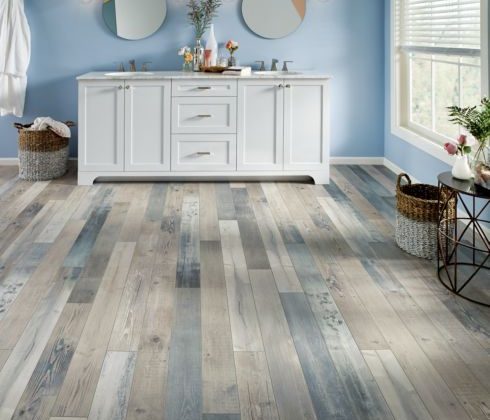4 Ways to Maintain Solid Wood Flooring
Maintaining solid wood flooring is essential to keep it looking beautiful and extending its lifespan. Sawgrass Floors provides solid wood flooring in Davie, Parkland, Plantation, Broward, Coral Springs, Weston.
 Here are four ways to maintain solid wood flooring:
Here are four ways to maintain solid wood flooring:
- Regular Cleaning: Regular cleaning is crucial to remove dirt, dust, and debris that can scratch or damage the wood surface. Use a soft broom, microfiber mop, or a vacuum cleaner with a brush attachment to sweep the floor. Avoid using excessive water or wet mops, as moisture can warp or stain the wood. Instead, use a slightly damp mop or a specialized wood floor cleaner to remove stubborn stains.
- Avoid Excess Moisture: Moisture is the biggest enemy of solid wood flooring. Avoid excessive exposure to water or other liquids, as it can cause the wood to swell, warp, or develop mold and mildew. Immediately wipe up any spills and avoid using steam cleaners or wet mops. Use area rugs or mats in high-moisture areas such as kitchens, bathrooms, and entryways to protect the wood from water damage.
- Protect from Scratches: While solid wood flooring is durable, it can still get scratched or damaged over time. Place felt pads under furniture legs and use floor protectors to prevent scratches when moving furniture. Avoid dragging heavy objects across the floor. High heels and pet claws can also cause scratches, so be cautious and trim your pet’s nails regularly. Additionally, consider using rugs or runners in high-traffic areas to minimize wear and tear.
- Maintain Humidity Levels: Wood is sensitive to changes in humidity, and excessive humidity or dryness can cause the wood to expand or contract, leading to gaps or cracks. To maintain stable humidity levels, use a humidifier during dry seasons and air conditioning or a dehumidifier during humid seasons. Aim for a relative humidity range of 35% to 55% to minimize the effects of moisture on the wood.
Bonus Tip: It’s a good practice to periodically inspect your solid wood flooring for any signs of damage, such as cracks, splinters, or loose boards. If you notice any issues, address them promptly to prevent further damage and ensure the longevity of your solid wood flooring.
Remember to consult the manufacturer’s guidelines and recommendations for specific maintenance instructions for your particular type of solid wood flooring. Please call us to know more.
